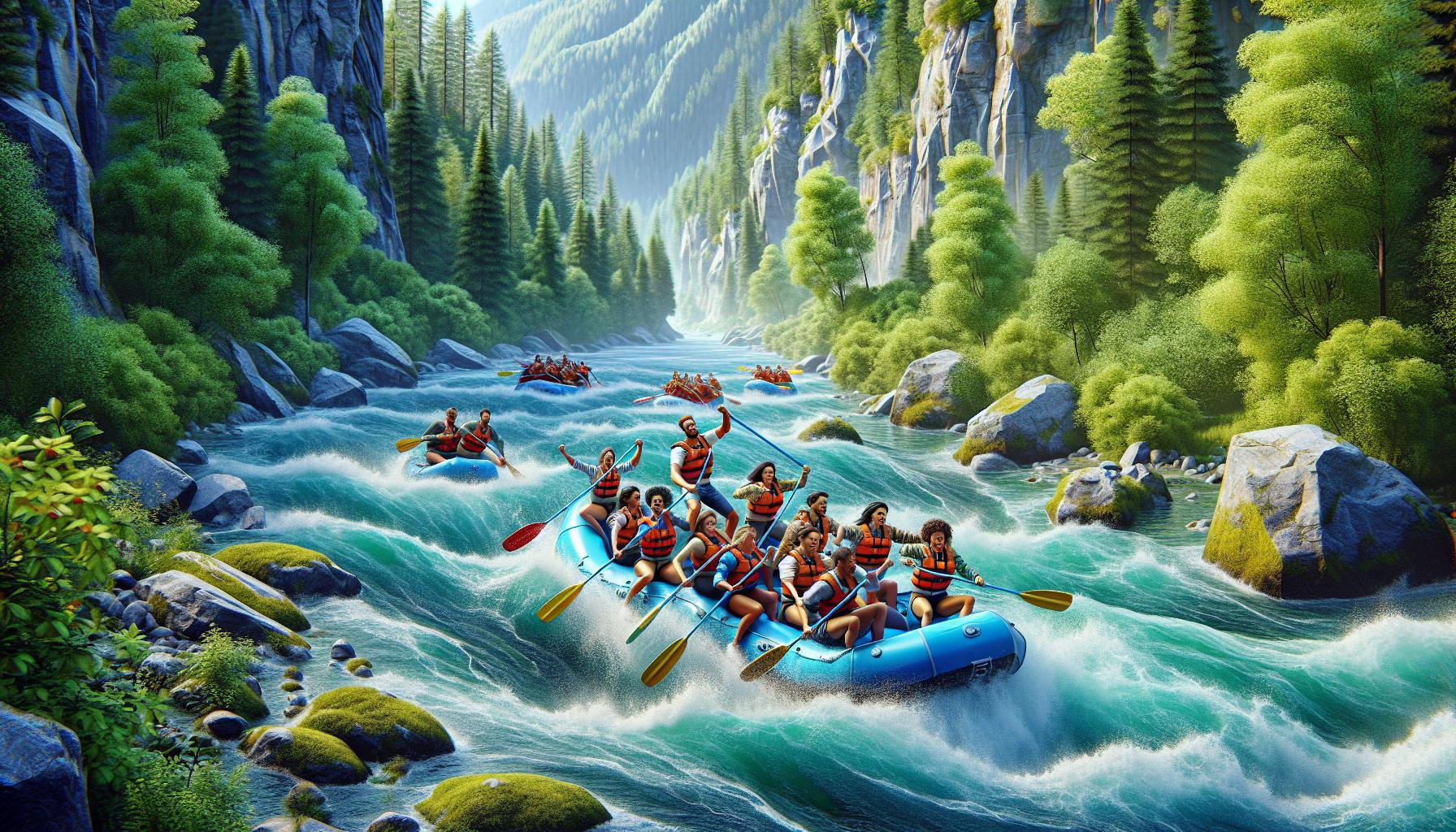Key Takeaways
- Definition and Appeal: Adventure tourism encompasses thrilling experiences that challenge both the body and mind, attracting travelers seeking excitement and personal growth.
- Types of Activities: Common adventure tourism activities include extreme sports, water-based activities, trekking and hiking, wildlife encounters, and cultural experiences, each offering unique challenges and benefits.
- Physical and Cultural Engagement: Adventure tourism combines physical exertion with deep cultural engagement, promoting personal growth and fostering community connections through immersive experiences.
- Benefits: Participants in adventure tourism experience personal growth, increased self-awareness, and heightened environmental awareness, as they engage with diverse cultures and nature.
- Challenges: Safety concerns and environmental impacts are significant challenges in adventure tourism, necessitating responsible practices and the use of experienced guides to ensure a safe and sustainable experience.
- Responsible Travel: Adventure tourism advocates for responsible travel, emphasizing respect for local ecosystems and cultures while promoting sustainable practices among travelers and operators alike.
Adventure tourism is more than just a vacation; it’s a journey that ignites the spirit of exploration. It encompasses thrilling experiences that challenge the body and mind, from hiking rugged mountains to diving in vibrant coral reefs. This type of tourism appeals to those seeking not just relaxation but also excitement and personal growth through unique encounters with nature and culture.
As travelers increasingly crave authentic experiences, adventure tourism has grown into a dynamic sector. It offers a chance to step outside comfort zones while discovering breathtaking landscapes and diverse ecosystems. Whether it’s white-water rafting in the Amazon or trekking through the Himalayas, adventure tourism invites everyone to embrace the thrill of the unknown.
Understanding Adventure Tourism
Adventure tourism encompasses activities that provide thrilling experiences, often involving physical exertion, cultural immersion, and exploration of remote areas. This niche market appeals to travelers craving excitement and challenges beyond conventional vacations.
Types of adventure tourism include:
- Extreme Sports: Activities like bungee jumping, skydiving, and rock climbing attract adrenaline seekers.
- Water-Based Activities: Kayaking, scuba diving, and white-water rafting offer adventures on rivers, oceans, and lakes.
- Trekking and Hiking: Challenging trails in locations like the Himalayas or the Andes provide stunning landscapes and physical fitness.
- Wildlife Encounters: Safaris and eco-tours allow travelers to observe animals in their natural habitats, enhancing environmental awareness.
- Cultural Experiences: Engaging with local communities and traditions deepens travelers’ understanding of diverse cultures.
Adventure tourism fosters personal growth and social connections through shared experiences. It promotes responsible travel practices by encouraging respect for local ecosystems and cultures. As this sector continues to evolve, it opens up new opportunities for travelers to explore the world in dynamic ways, enhancing both their physical and mental well-being.
Key Characteristics of Adventure Tourism

Adventure tourism features several core characteristics that distinguish it from traditional travel experiences. It combines thrilling physical activities and deep cultural engagement to create memorable experiences.
Physical Activity
Physical activity serves as a fundamental aspect of adventure tourism. Participants often engage in strenuous activities that challenge their endurance and skill levels. Examples include trekking, rock climbing, and white-water rafting. These activities occur in diverse environments, such as mountains, rivers, and forests, emphasizing the connection between physical exertion and nature. This blend of adventure and fitness boosts travelers’ physical health while enhancing their overall experience.
Cultural Exchange
Cultural exchange plays a crucial role in adventure tourism. Travelers participate in immersive experiences that foster connections with local communities. Activities include cooking classes with local chefs, traditional dance lessons, and participation in local festivals. These interactions promote understanding and appreciation of different cultures, enriching the travel experience. By sharing stories and traditions, both travelers and hosts gain valuable insights and perspectives, creating lasting memories.
Types of Adventure Tourism

Adventure tourism includes various types of activities that cater to thrill-seekers and nature enthusiasts alike. These activities often fall into three main categories: land-based, water-based, and air-based experiences.
Land-Based Activities
Land-based activities feature outdoor pursuits that typically involve physical challenges and exploration. Popular options include trekking in remote regions, rock climbing on natural formations, and mountain biking through rugged trails. Notable examples involve hiking the Inca Trail in Peru or scaling cliffs in Yosemite National Park. These activities promote endurance and physical fitness while allowing participants to connect with nature.
Water-Based Activities
Water-based activities encompass exhilarating experiences on or in water. Kayaking through white-water rapids, scuba diving to explore coral reefs, and surfing challenging waves rank among the most sought-after experiences. Noteworthy locations include the Great Barrier Reef for diving and the white-water rivers of Costa Rica for kayaking. These activities not only offer adventure but also present opportunities to appreciate marine biodiversity.
Air-Based Activities
Air-based activities provide unique perspectives from above, catering to those eager for an adrenaline rush. Options include skydiving from significant heights, paragliding over picturesque landscapes, and zip-lining through canopies. Experiences such as hot air balloon rides over Cappadocia in Turkey or bungee jumping from iconic bridges exemplify the thrilling nature of air-based adventure tourism. These experiences foster excitement and a sense of freedom as participants soar through the sky.
Benefits of Adventure Tourism

Adventure tourism offers numerous benefits that enhance both individual experiences and broader societal impacts. Travelers engage in activities that promote personal growth and foster environmental awareness.
Personal Growth
Personal growth occurs as travelers face challenges that push their limits. Engaging in strenuous activities like trekking and rock climbing builds resilience and confidence. Overcoming fears during activities such as bungee jumping or skydiving cultivates a sense of accomplishment. Additionally, immersion in local cultures through cooking classes or participation in festivals deepens understanding and appreciation of diversity. These experiences contribute to increased self-awareness and emotional well-being.
Environmental Awareness
Environmental awareness rises through direct interactions with nature during adventure tourism. Travelers often witness the effects of climate change or habitat destruction first-hand, prompting a sense of responsibility to protect ecosystems. Participation in eco-tours or wildlife conservation efforts fosters a commitment to sustainable practices. Adventure tourism encourages respect for natural resources and local cultures, promoting stewardship and advocacy for environmental preservation.
Challenges in Adventure Tourism
Adventure tourism presents unique challenges, particularly in terms of safety and environmental impact, both of which require careful consideration.
Safety Concerns
Safety concerns represent a significant challenge in adventure tourism. As activities often involve inherent risks, participants may encounter accidents or injuries. Factors such as environmental conditions, equipment failure, and lack of prior experience can exacerbate these risks. Travelers must recognize potential hazards associated with specific activities, like climbing or diving. Adhering to guidelines, using appropriate gear, and engaging with experienced guides enhances safety. Organizations like the Adventure Travel Trade Association provide resources and best practices for mitigating risks in adventure tourism.
Environmental Impact
Environmental impact constitutes a critical issue in adventure tourism. Increased foot traffic in natural areas can lead to habitat degradation and wildlife disturbances. Activities such as trekking and mountain biking may contribute to soil erosion and pollution. Moreover, water-based activities can harm aquatic ecosystems if not managed responsibly. Adventure tourism operators increasingly promote sustainable practices, including waste reduction measures and environmental education. Travelers can support eco-friendly initiatives by choosing responsible tour operators and minimizing their ecological footprint during adventures.
Blend of Excitement And Personal Growth
Adventure tourism offers a unique blend of excitement and personal growth that appeals to modern travelers. By embracing challenges and immersing themselves in diverse cultures and stunning landscapes, individuals not only enhance their physical and mental well-being but also foster a deeper understanding of the world around them.
As this sector continues to grow, travelers are encouraged to engage responsibly with nature and local communities. By prioritizing safety and sustainability, adventurers can ensure that their experiences contribute positively to both their own lives and the environments they explore. This commitment to responsible travel will help preserve the beauty and diversity of the planet for future generations.